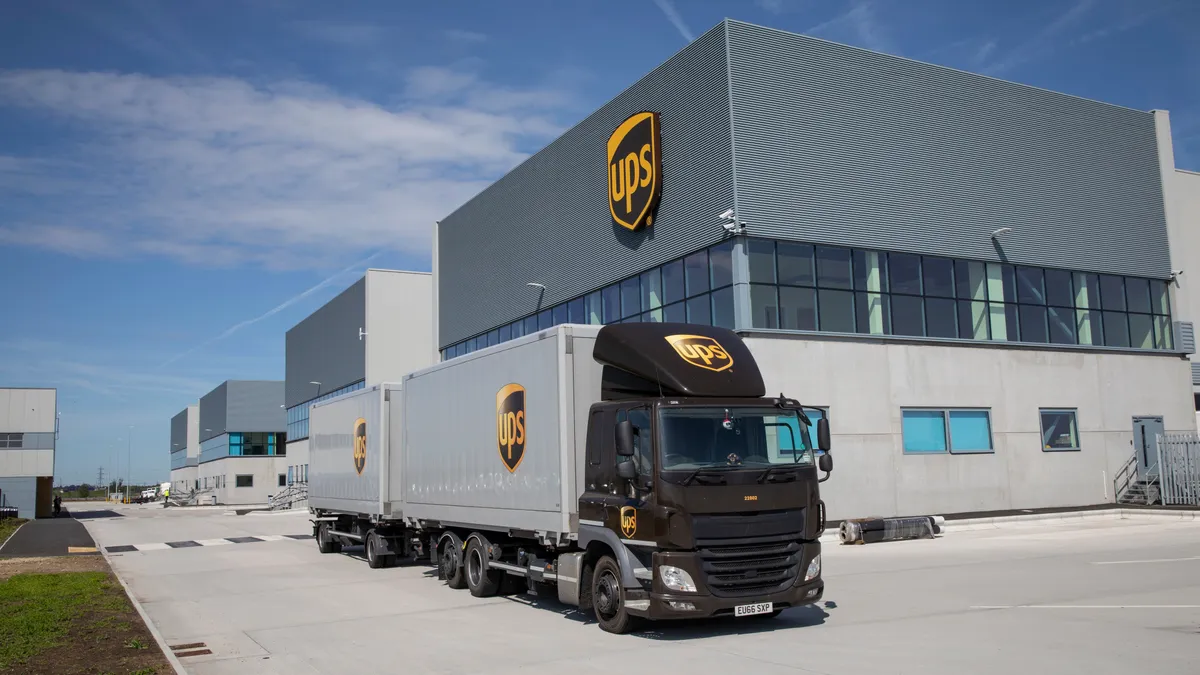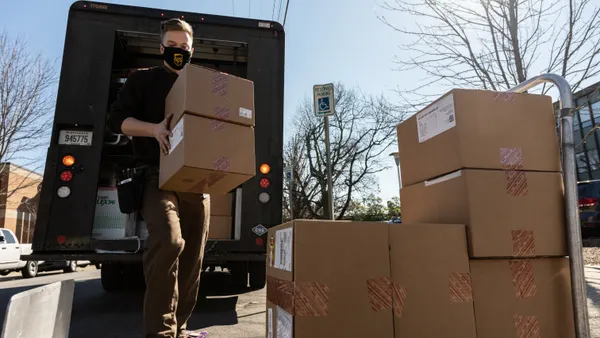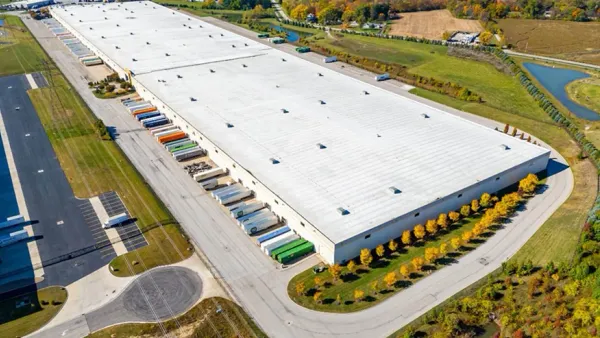Dive Brief:
- UPS COO Jim Barber expressed confidence in the company's three-year, $20-billion transformation, despite a rough first quarter in which costly new buildings, warehouse upgrades and a harsh winter skimmed $80 million off of profits.
- On UPS' first-quarter earnings call Thursday, Barber said the transformation is on course and will pay off in the end. Roughly 80% of the network will "touch automation" by the end of 2019, he said.
- The company invested $1.5 billion into new capacity in the first quarter — part of an expected $7 billion spend for the year. "2019 is a year of investments in our network and executing our strategies to improve operating costs and deliver higher quality revenue growth despite uncertain conditions," said Chief Information and Engineering Officer Juan Perez.
Dive Insight:
Automation served UPS well during peak season 2018, increasing average daily volume in the fourth quarter by 3% year-over-year.
Outside of peak season, the 3PL's $20-billion transformation starts to sound less appealing to onlookers. Although revenue per piece was up 3%, "package characteristic, customer mix and weather" lowered profitability.
In 2018, UPS opened or retrofitted 22 facilities representing 5 million square feet globally, with 4 million of that in the U.S. The company expects to open or retrofit 20 more facilities in 2019, adding 400,000 packages per hour in sortation capacity.
Perez said 60% of the company's automation projects set to finish by 2022 are now completed. These buildings are intended to be 30-35% more efficient than their standard, non-automated counterparts. Currently, 55-60% of eligible volume is going through these advanced facilities.
The task before UPS in this extended technology implementation timeline is to grow package volume while increasing profitability. In January, executives were absolutely sure this is possible. In April, they seem to have added a caveat: as long as the weather cooperates.















